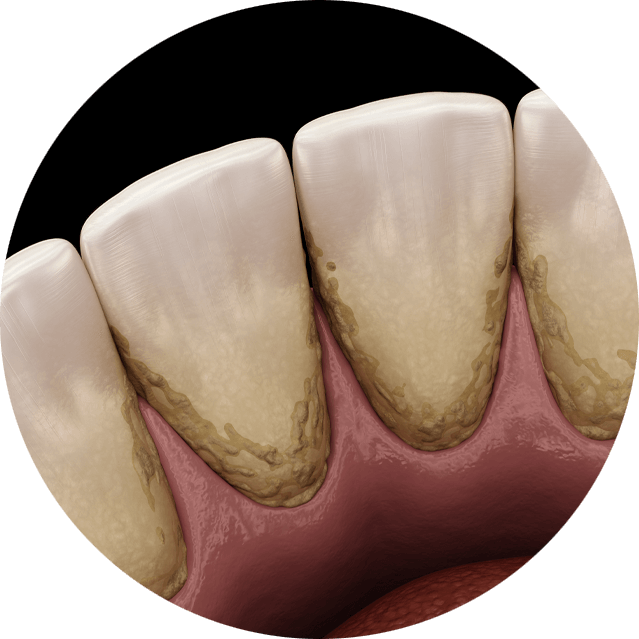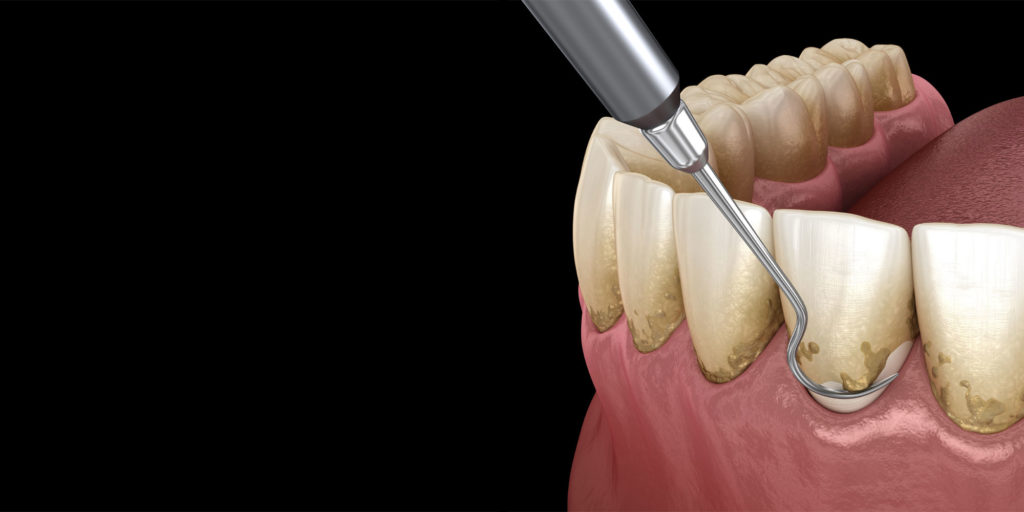
Bethann, registered dental hygienist talks about treating gum disease
Gum disease, or periodontal disease, can be caused by long-term exposure to plaque, the sticky but colorless film on teeth that forms after eating or sleeping. Gingivitis is the medical term for early gum disease.
Periodontal disease affects approximately 75% of adults over age 30, and it’s the leading cause of tooth loss among adults.
Gum disease originates in the gums, where infections form from harmful bacteria and other materials left behind from eating. Early warning signs of gum disease include:
In many cases, gingivitis can go unnoticed. An infection can eventually cause the gums to separate from the teeth, creating even greater opportunities for infection and decay. If gum disease goes untreated, more serious problems such as abscesses, bone loss, or periodontitis can occur.
Without proper preventive care and nutritional defense, the gums and supporting structures become vulnerable to bacterial invasion. Periodontal disease can also result from vitamin deficiency, certain medications, glandular disorders, and blood disorders.
Pregnancy has also been known to cause a form of gum disease. This has been linked to hormonal changes that promote plaque production.
Gum disease is one of the major causes of tooth loss in adults. It’s often avoidable, but if you develop gum disease, we can treat it in a number of ways. Learn more below!

Our team is highly concerned with early diagnosis and treatment of gum disease. Without early detection, serious forms of gum disease can form. Advanced gum disease can result in irreversible damage to the teeth and gums. Gum disease can affect a patient’s whole body.
Gum disease can be prevented in a majority of cases if it’s diagnosed during early stages. The use of a phase contrast dental microscope can detect the early onset of changes within the periodontal bacteria.
The microscope has many different functions in aiding the prevention and treatment of periodontal problems, such as:
Evaluation with the microscope provides a quick, easy, and painless assessment of oral bacteria Using this microscope also presents immediate feedback before you leave the office.
It also allows our team to recommend appropriate remedies for a particular bacterium. By using both natural herbal remedies and conventional treatments, we are able to control existing gum disease or prevent it altogether.

If your gum disease has not progressed to more serious stages, we may irrigate your gums with a bactericidal agent. These agents can include:
These bactericidal agents will eliminate the harmful bacteria from your mouth and give your gums a chance to recover from the effects of gum disease.

Some cases of acute periodontal (gum) disease do not respond to more conventional treatment or self-care such as flossing. These may require a kind of cleaning called scaling and root planing.
The procedure begins with the administration of a local anesthetic to reduce any discomfort. Then we use a small instrument to clean beneath your gum line to remove plaque and tartar.
Next the root surfaces on the tooth are planed and smoothed.
If treatment is effective, scaling and root planing help the gums reattach themselves to the tooth structure. However, additional measures may be needed if the periodontal pockets persist after scaling and root planing treatment.
Prevention of gum disease is our top goal! If the diseased condition is left alone, the gums may become very painful and swollen, change to a red or bluish color, recede, and bleed easily. In time, tooth sockets become so eroded that teeth loosen and fall out. Due to infection, teeth may need to be extracted.
Certain types of oral bacteria can have dramatic, negative effects on the whole body. In addition to bad breath and bleeding or painful gums, you could experience inflammation.
Bacteria that invade and infect the gums and bone around the teeth are difficult to reach. Deep inside of the tooth pocket, the bacteria colonize, thrive, replicate, and find their way into the bloodstream. Harmful bacteria from untreated gum disease can promote or complicate diseases like:

These diseases are why we place such a high value on treating gum disease as early as possible.
In order to prevent gum disease, it is important that patients adopt a good daily oral hygiene routine. Patients should also attend regular dental check-ups with our dental professionals. We can identify early signs of gum disease that may not be noticeable to patients.
You can also fight gum disease by keeping your immune system strong. You’ll need to:
Preventing gum disease can save you from both pain and extensive treatments later. We are happy to help you evaluate your oral hygiene routines to save you from gum disease.
I understand the information disclosed in this form may be subject to re-disclosure and may no longer be protected by HIPAA privacy regulations and the HITECH Act.
I understand the information disclosed in this form may be subject to re-disclosure and may no longer be protected by HIPAA privacy regulations and the HITECH Act.
